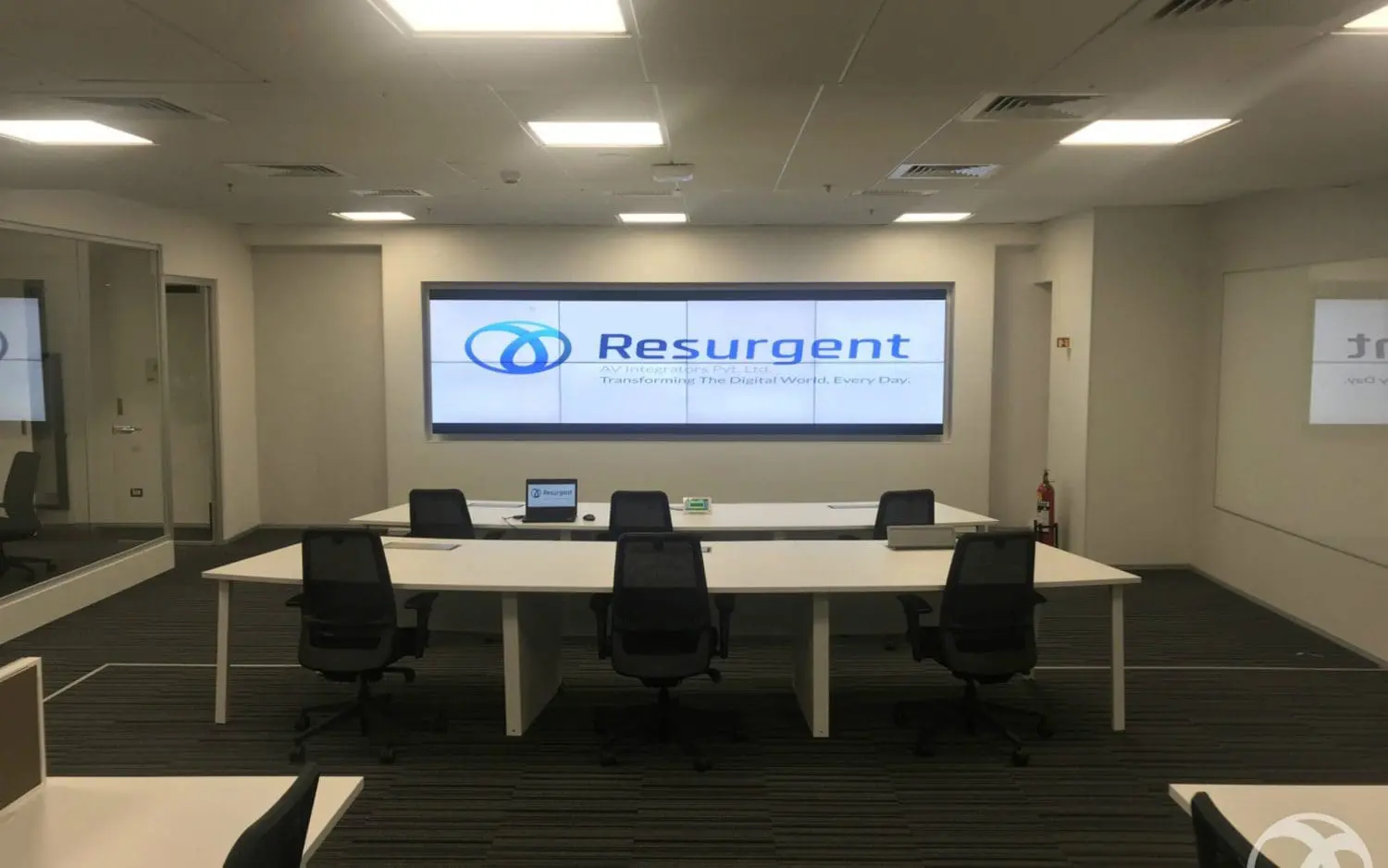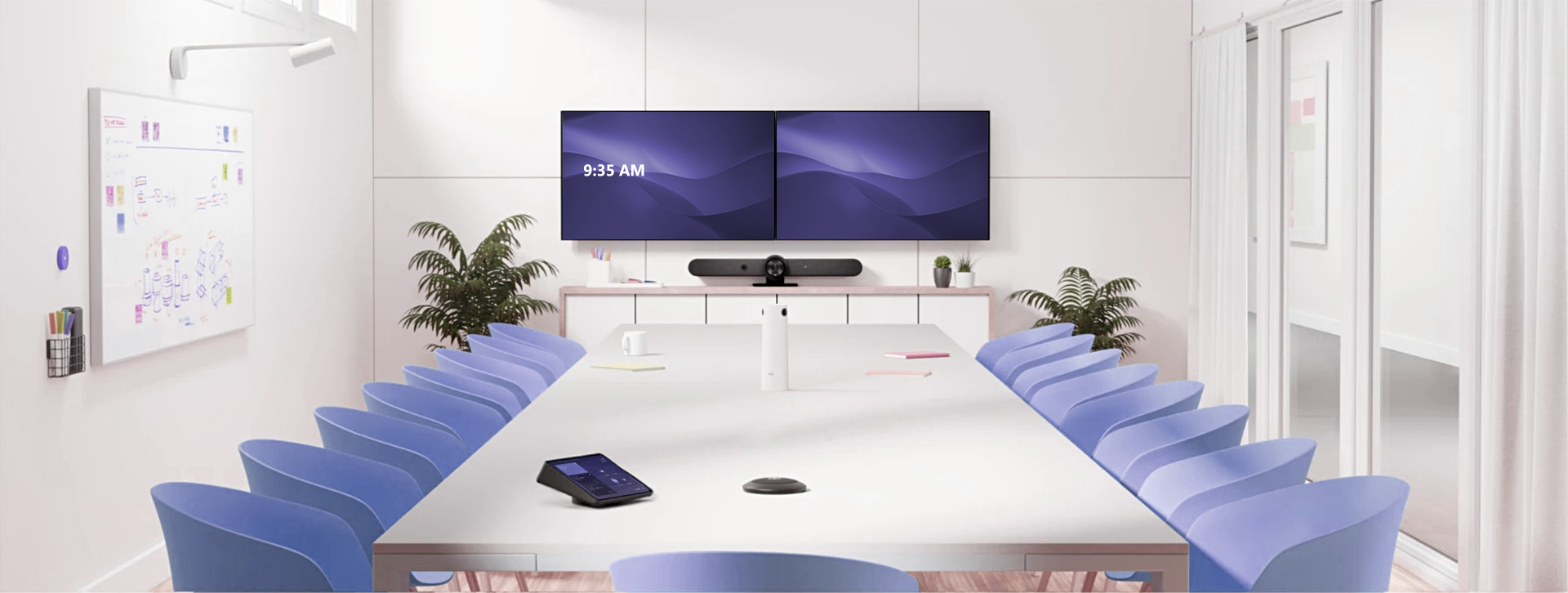Gone are those days when training meant sitting in a room passively listening to the instructor. Corporate training was often one-way without active participation from the employees.
Today’s training has fundamentally changed. It’s become more contextual, immersive, and interactive. Obviously, the training spaces have also evolved to become more engaging and active environments. In all forward-thinking organizations that take training impact seriously, interactive training spaces have replaced passive training spaces.
These spaces strategically and smartly incorporate audio-visual elements and technology to make the learning environment engaging enough to retain the attention of employees to help them learn better, remember more, and get empowered.
A typical interactive training space contains high-speed internet connectivity, whiteboards, provision for laptops and tablets, LED display units, wireless projection system, interactive boards, multi-touch technology, and much more.
Why Companies Need Interactive Training Spaces?
1. Foster learning and improve retention
Employees require training so they can understand the company’s values and their job roles well. Although traditional learning techniques introduce the employees to new concepts, they may not be very effective. They do not give the employees the contextual knowledge of their role they need to be able to perform well. Employees do not retain enough to translate that learning on their job. According to the forgetting curve hypothesis, humans forget 70% of new information within 24 hours. It becomes even more challenging when the concepts are complex to understand and learn.
That’s where interactive training spaces come to the rescue. In an interactive training space, the trainers can demonstrate how a workflow works or use simulation to create an almost similar environment of the workspace to give an in-context idea of how things work. They can use interactive smart boards to draw concepts and even share in real-time with employees. Such powerful techniques aid the learning and retention abilities of the employees.
2. Keeps the employees engaged
Research has shown that an average human attention span is less than that of a goldfish. The average person cannot pay attention for more than 8 seconds. Considering that humans are supposed to have evolved cognitive functions, this stat might come as a surprise to many. So, the million-dollar question is, how can organizations keep employees invested in the training sessions?
One solution is to create interactive training spaces. Humans are visual learners. They understand with the help of visual aids. So, trainers can include a lot of visual stimulus and graphical elements in their training. Simple additions such as large touch displays and interactive smartboards can liven up the environment and enable employees to stay embedded in the sessions.
3. Improves participation
Traditional training is guilty of one-way communication. Employees speak only when they have questions. The trainer dominates the rest of the time. Over the course of such an interaction, the employees get bored and lose interest in what’s being taught. Training should be interactive and promote active participation.
Interactive training spaces provide tools and opportunities to make training interactive. Solutions such as wireless sharing of content across multiple laptops or desktops, and hassle-free and real-time content sharing keep the employees on their toes. It encourages them to think throughout the course of training and enables them to grasp the lessons better. They become more involved in the process, which aids collaboration and social learning among other trainees too.
4. Facilitates training from best trainers
Sometimes companies have to invite industry experts to train the employees on specific tasks. Arranging the logistics and scheduling the training according to the availability of the experts can be a herculean task. It can also be cost-intensive.
Companies can avoid these hassles by arranging virtual training and video conferences with experts. They can arrange large HD video displays and the very best audio quality for a life-like experience and hassle-free training. They can also arrange multiple desktops or laptops in the room to enable employees to share their responses, queries, ideas, and feedback with the trainer in real-time.
5. Makes training accessible and enhances the overall experience
On average, companies spent $1,286 per learner last year. As you consider the size of the workforce, this becomes a big investment. Considering the investment a company makes in skilling an employee, it’s crucial that the training is effective and provides a positive outcome.
Interactive training spaces make training interesting and intuitive for the employees. Simple solutions such as touch screens, multi-screen sharing, smart boards, and world-class audio-visual aids have proved to be effective in keeping the employees engrossed in the sessions by providing them the opportunity to connect better with the content. Interactive training has also removed barriers in learning for those working in remote locations. For example, companies have started conducting interactive virtual training sessions to ensure that employees from any part of the world can participate and learn. This has helped save time and expenses for these companies too.
Conclusion
It should be clear from these examples that interactive training spaces can amplify the impact of training programs. Such spaces can motivate employees to stay invested throughout the sessions and deliver greater value to the employees and the organization too.
However, companies should be careful while designing their training spaces. Investing in technology for the sake of it could lead to a disastrous outcome. That’s why it’s important to consult the experts in this space to get a tailor-made solution that’s absolutely right for the specific needs.
Resurgent has helped companies to deliver high-impact learning experiences online and offline. From innovative infrastructure to high-quality AV communication, we have built intuitive learning experiences to promote engagement and participation among employees.



